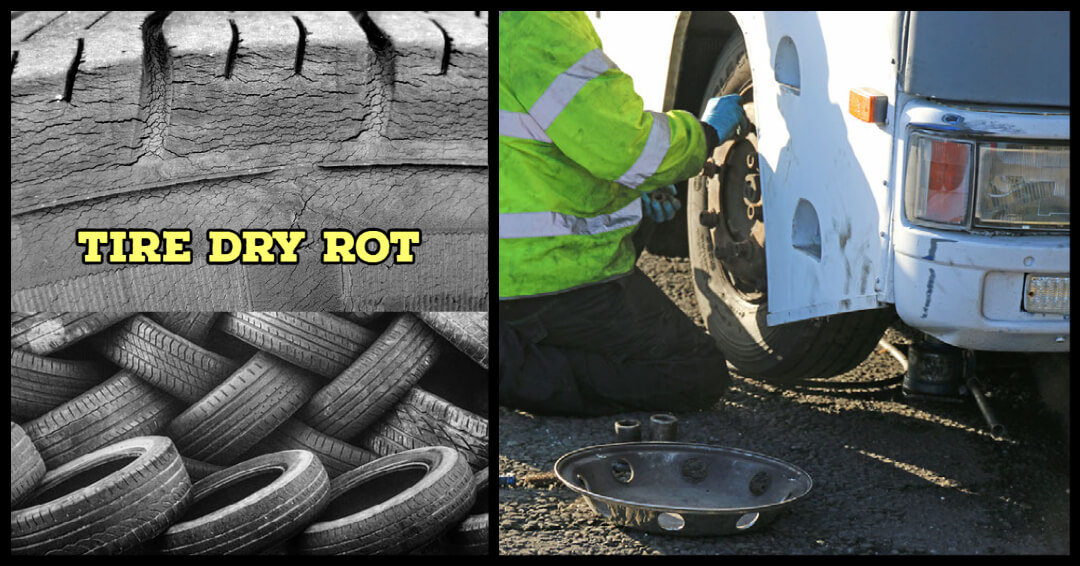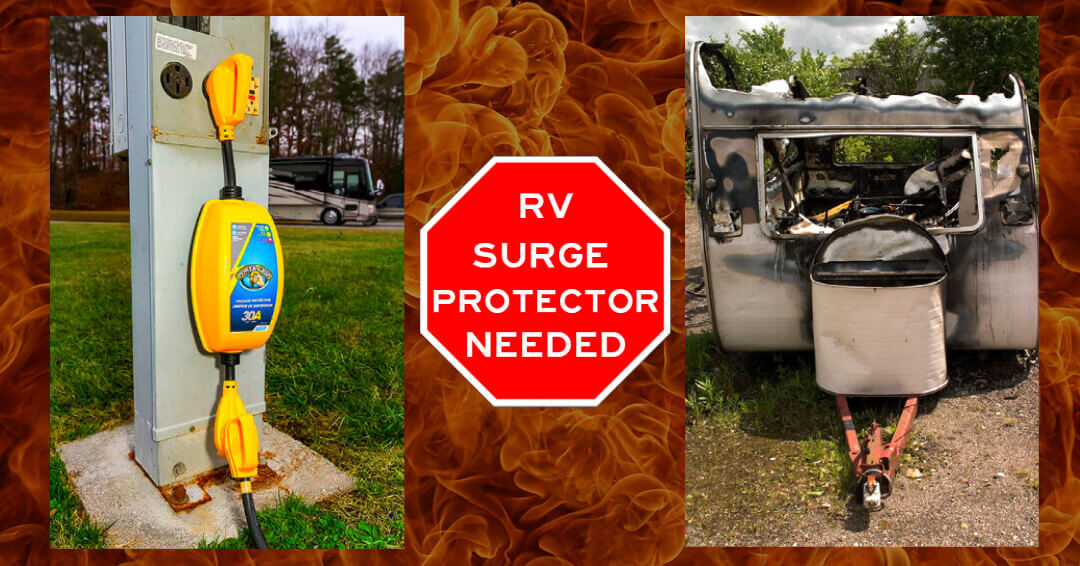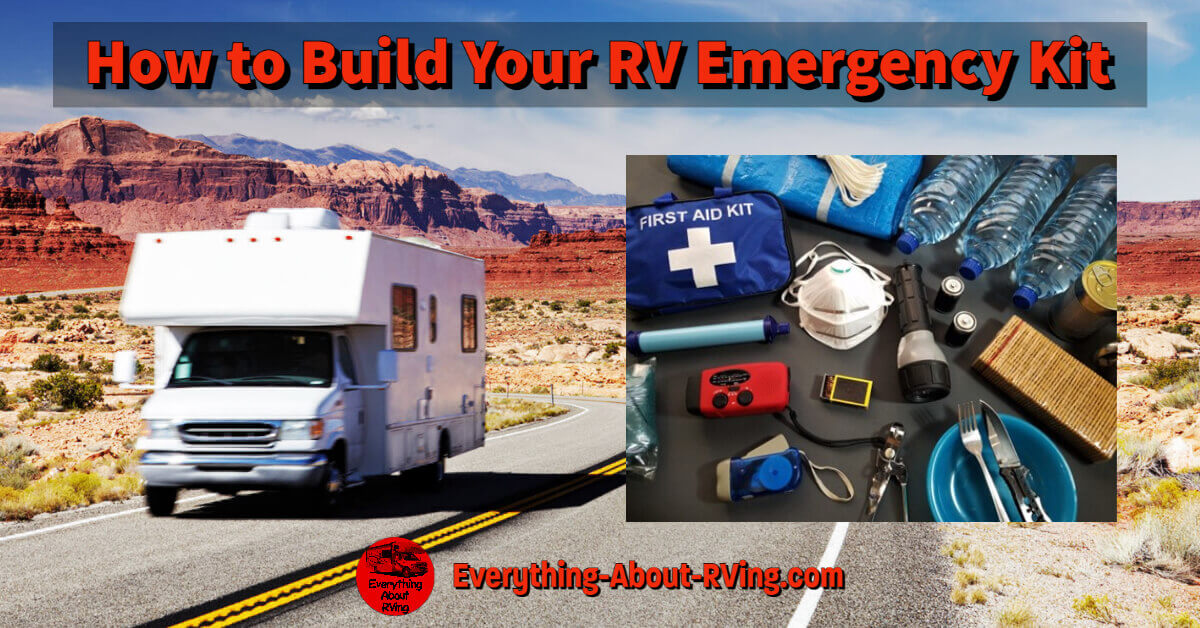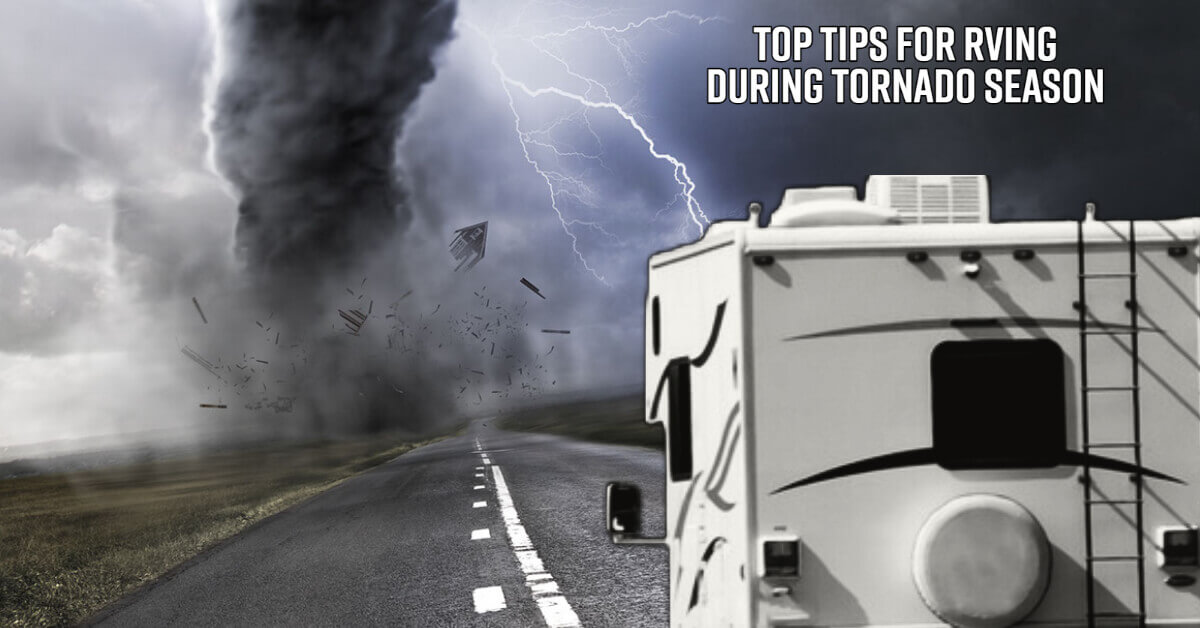- Home Page
- RVing Tips & Tricks
- Prevent Rv Tire Dry Rot
Prevent RV Tire Dry Rot
By Mary Speir
Learn How to Prevent RV Tire Dry Rot
Why do you need to learn how to prevent RV tire dry rot? One of the most overlooked parts of any recreational vehicle is the tires. Since tires are made of rubber, common sense tells us that rubber will degrade over time. When the chemicals and oils in the rubber start to evaporate, the rubber loses its flexibility and becomes brittle. When the chemical bonds break down, a dry tire is the result. That is when the rubber in the tire fades from black to dull gray and small hairline cracks on the surface of the tire's sidewalls and tread begin to show. In most cases, it is not safe to drive on tires with dry rot. The heat of long-distance driving will cause the rubber to expand, and the tires will break apart while driving. That's one way to ruin a well-planned vacation!
For that reason, the tire industry has set the standard for tire replacement at a maximum of 10 years. Some tire companies even suggest a change at the six-year period because rubber degradation can cause a serious accident and compromise your personal safety.
The most common causes for dry rot are lack of use, low inflation in tires, and storage near excessive heat. Dry rot occurs most often on the tires of motor homes, classic & vintage cars, trucks, and Jeeps due to infrequent use of the vehicle? One independent survey estimates that classic and vintage car owners rarely drive their prized possessions more than once a month. Little wonder that this phenomenon would also exist on the tires of all types of trailers whether it is a camper travel trailer, fifth wheel trailer, boat trailer or even horse trailers. In addition to your daily transportation vehicle, there are thousands of tires bearing recreational vehicles that also have dry rot issues that seem to occur more frequently than on the more often used daily vehicles. Many trailer owners become alarmed when the tires on their camper, boat, or horse trailer show signs of dry rot after only two years of ownership.
Of course, inactivity is not the only cause of tire dry rot. Low tire pressure and exposure to excessive UV rays also adds to the problem. Improperly inflated tires can wear out prematurely and become a safety issue. It is important that vehicle owners rely on the tire manufacturer to specify the appropriate inflation pressure for their tires. Even though tire pressure is listed on tires, it is important to remember that the pressure stamped on the tire is a maximum rating. Once a month vehicle owners should have the tire pressure checked with an inexpensive tire gauge and the vehicle should be driven often.
Besides tire pressure, there is a great deal of information that can be found on the exterior of a tire. The Tire Identification Number is a Department of Transportation code that identifies the week and year the tire was produced. The first two digits tells you the week of manufacture, and the last two digits are the year. For example, if the last four digits are 1213, that means that the tire was manufactured during the twelfth week of the year 2013. Even if you have had the tires on your vehicle for a short period of time, if the manufacture date was several years ago, there could be some degradation or unwrapping in the tire. Most tire manufacturers' warranties cover their tires for four years from the date of purchase or five years from the week the tires were manufactured.
The greatest threat to tire sidewall cracking (dry rot) is constant exposure to the sun. The degradation process of tires is called thermo-oxidative degradation and it is accelerated in the hotter climates. If your vehicle is stored on black asphalt or any petroleum-based product or other heat-absorbing surface that naturally attracts the UV rays, then these tires will deteriorate quickly. Constant exposure to sun can speed up the effects of dry rot upon the tires.
So, the question is, how can I prevent RV tire dry rot? The easiest way to protect against dry rot is to check at least once a month that the tires are inflated to the manufacturer's recommendations. The ideal way to store any tire-bearing vehicle for an extended period is in a climate-controlled garage. Since that is expensive and often unavailable for the majority of automobile, truck, camper, and trailer owners the next best option is to protect the rubber of the tire. Some trailer tire owners suggest that the trailer tires have a board placed under the tire while in storage to keep it away from asphalt that attracts UV rays. Others suggest that the trailer be jacked up off the ground and the tires of the trailer be removed and stored indoors if it is going to be in storage for 60 or more days.
Dry rot can be fixed only in the early stages. Many people put a UV block on the tires three or four times a year. The best recommended UV block is 303 Tire UV Protectant (pictured above). The label says it's good for UV protection that can help prevent RV tire dry rot. There are many tire owners who suggest the use of ArmourAll but my research indicates that ArmourAll has been proven to hurt the tires more than help.
The easiest and possibly the least inexpensive way to protect your tires is with a tire and wheel cover. These vinyl covers block the sun's rays and encase the tire in darkness. Without exposure to the sun, ozone will not occur, and your tires should easily last the recommended 6-7 years before replacement is necessary.
Tire and wheel covers come in a variety of sizes including single, double, and even triple axel sizes for motor homes, travel trailers, fifth wheel trailers & campers. They are also available in white, grey, or black to match or coordinate with other protective covers used on camper trailers, motor homes, classic & vintage cars, trucks, and Jeeps.
About The Author
Mary Speir, President of Mary's Online Enterprises, Inc.
For your choice of wheel & tire covers that protect your investment, go to RV Covers Protect





